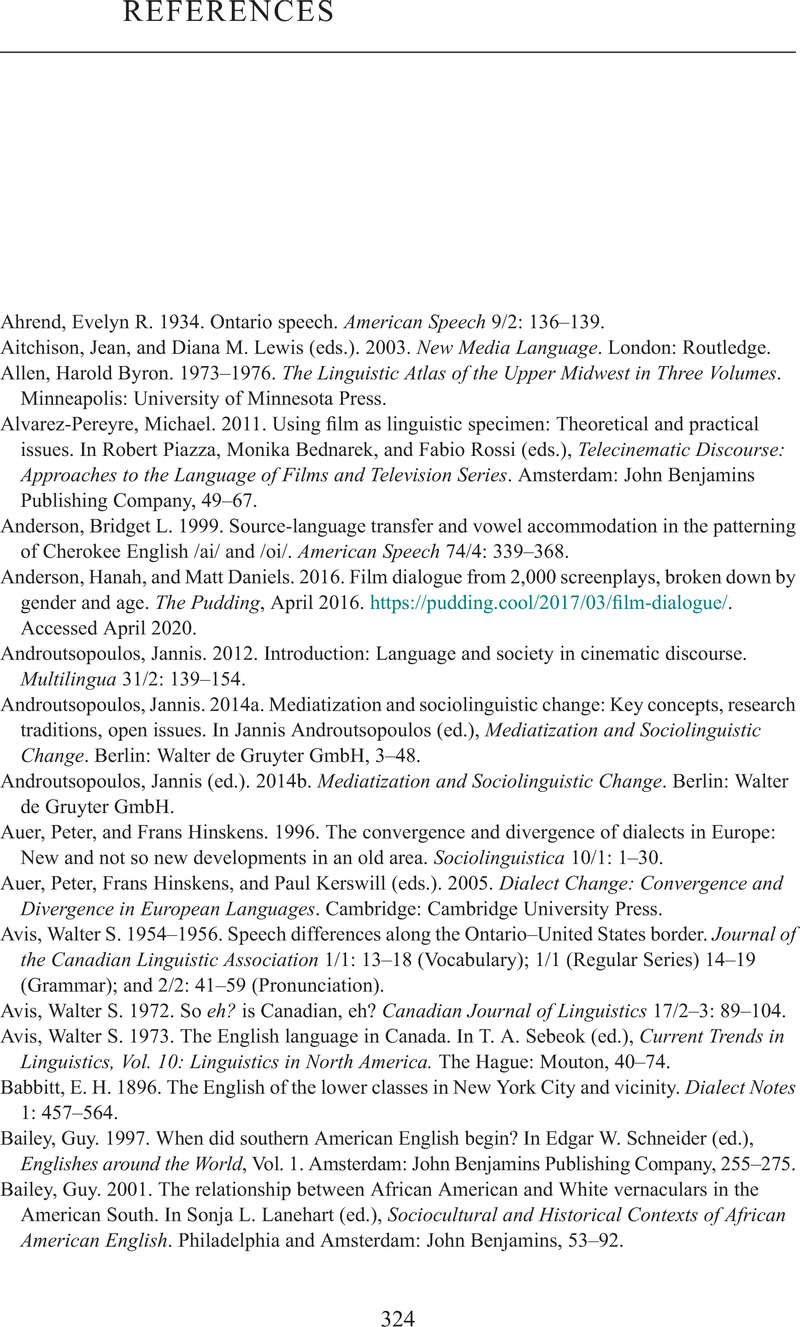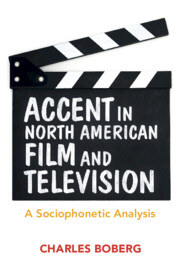Book contents
- Accent in North American Film and Television
- Accent in North American Film and Television
- Copyright page
- Dedication
- Contents
- Figures
- Tables
- Acknowledgments
- 1 Introduction
- 2 Method
- 3 The Emergence of General North American English
- 4 Sex Differences in General North American English
- 5 New York City English in Film and Television
- 6 Other Regional Accents in North American Film and Television
- 7 Ethnic Accents in North American Film and Television
- 8 Summary and Conclusions
- Appendices
- References
- Index of Actors
- Index of Film and Television Titles
- Index of Subjects
- References
References
Published online by Cambridge University Press: 16 December 2021
- Accent in North American Film and Television
- Accent in North American Film and Television
- Copyright page
- Dedication
- Contents
- Figures
- Tables
- Acknowledgments
- 1 Introduction
- 2 Method
- 3 The Emergence of General North American English
- 4 Sex Differences in General North American English
- 5 New York City English in Film and Television
- 6 Other Regional Accents in North American Film and Television
- 7 Ethnic Accents in North American Film and Television
- 8 Summary and Conclusions
- Appendices
- References
- Index of Actors
- Index of Film and Television Titles
- Index of Subjects
- References
Summary

- Type
- Chapter
- Information
- Accent in North American Film and TelevisionA Sociophonetic Analysis, pp. 324 - 342Publisher: Cambridge University PressPrint publication year: 2021



